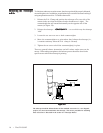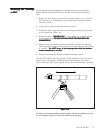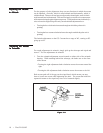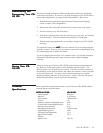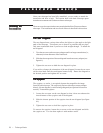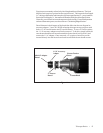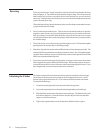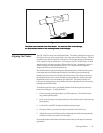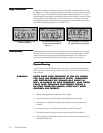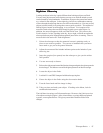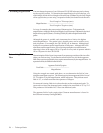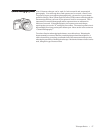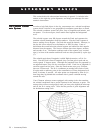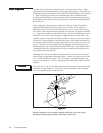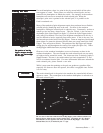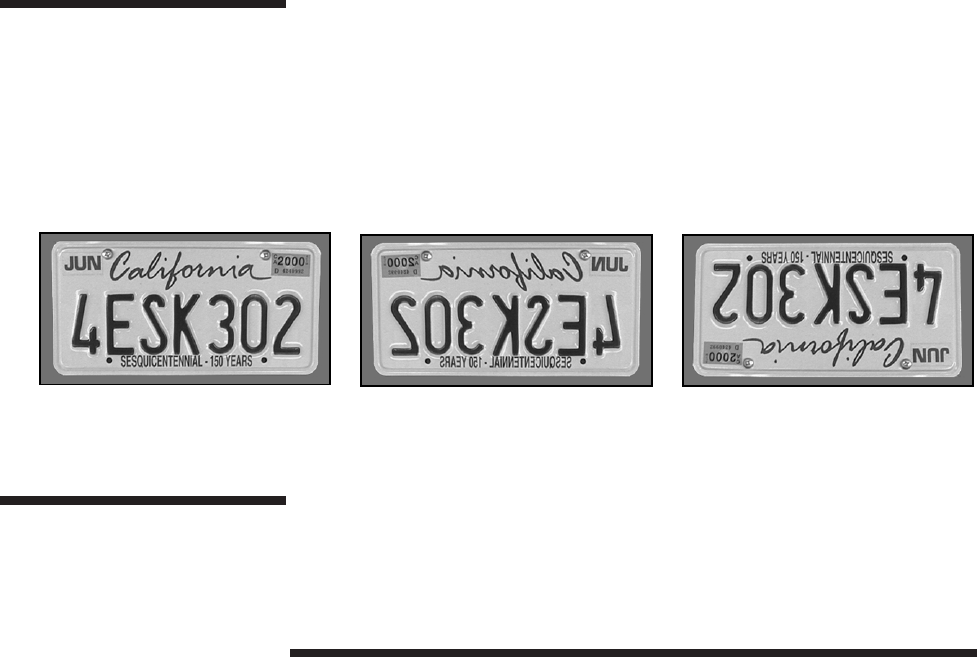
24 • Telescope Basics
Image OrientationImage Orientation
Image OrientationImage Orientation
Image Orientation
It should be noted that the image orientation will change depending on the viewing
configuration. When using the star diagonal, the image is right-side-up, but reversed
from left-to-right. If inserting the eyepiece into the accessory adapter (i.e., without
the star diagonal), the image is inverted (upside down and reversed from left-to-right).
This holds true for the 9x50 finder as well as the telescope. For correct orientation
through the telescope, which is important primarily for terrestrial observing, use the
optional 45° erect image diagonal 1-1/4" (#94112-A).
Actual image orientation as seen
with the unaided eye
Inverted image, as viewed with
the eyepiece directly in telescope
Reversed from left to right, as
viewed with a Star Diagonal
Figure 4-3
With the telescope fully assembled and all the accessories attached you are ready
for your first look. Your first look should be done in the daytime when it will be
easier to locate the locking clamps and adjustment handles. This will help to
familiarize you with your telescope, thus making it easier to use at night.
Daytime ObservingDaytime Observing
Daytime ObservingDaytime Observing
Daytime Observing
Your Celestron CR-150 HD telescope works well as a terrestrial spotting scope.
When not used to examine objects in the night sky, it can be used to study objects
here on Earth.
WARNING !WARNING !
WARNING !WARNING !
WARNING !
NEVER POINT YOUR TELESCOPE AT THE SUN UNLESSNEVER POINT YOUR TELESCOPE AT THE SUN UNLESS
NEVER POINT YOUR TELESCOPE AT THE SUN UNLESSNEVER POINT YOUR TELESCOPE AT THE SUN UNLESS
NEVER POINT YOUR TELESCOPE AT THE SUN UNLESS
YOU HAVE THE PROPER SOLAR FILTER. PERMANENTYOU HAVE THE PROPER SOLAR FILTER. PERMANENT
YOU HAVE THE PROPER SOLAR FILTER. PERMANENTYOU HAVE THE PROPER SOLAR FILTER. PERMANENT
YOU HAVE THE PROPER SOLAR FILTER. PERMANENT
AND IRREVERSIBLE EYE DAMAGE MAY RESULT ASAND IRREVERSIBLE EYE DAMAGE MAY RESULT AS
AND IRREVERSIBLE EYE DAMAGE MAY RESULT ASAND IRREVERSIBLE EYE DAMAGE MAY RESULT AS
AND IRREVERSIBLE EYE DAMAGE MAY RESULT AS
WELL AS DAMAGE TO YOUR TELESCOPE. ALSO, NEVERWELL AS DAMAGE TO YOUR TELESCOPE. ALSO, NEVER
WELL AS DAMAGE TO YOUR TELESCOPE. ALSO, NEVERWELL AS DAMAGE TO YOUR TELESCOPE. ALSO, NEVER
WELL AS DAMAGE TO YOUR TELESCOPE. ALSO, NEVER
LEAVE YOUR TELESCOPE UNATTENDED DURING ALEAVE YOUR TELESCOPE UNATTENDED DURING A
LEAVE YOUR TELESCOPE UNATTENDED DURING ALEAVE YOUR TELESCOPE UNATTENDED DURING A
LEAVE YOUR TELESCOPE UNATTENDED DURING A
DAYTIME OBSERVING SESSION, ESPECIALLY WHENDAYTIME OBSERVING SESSION, ESPECIALLY WHEN
DAYTIME OBSERVING SESSION, ESPECIALLY WHENDAYTIME OBSERVING SESSION, ESPECIALLY WHEN
DAYTIME OBSERVING SESSION, ESPECIALLY WHEN
CHILDREN ARE PRESENT.CHILDREN ARE PRESENT.
CHILDREN ARE PRESENT.CHILDREN ARE PRESENT.
CHILDREN ARE PRESENT.
1. Begin by finding a distant object that is fairly bright.
2. Insert the eyepiece (one with a large focal length) into the telescope.
3. Release the R.A. and DEC clamps and point the telescope at the object you
selected.
4. Locate the object in your finder and lock the R.A. and DEC clamps.
5. Use the slow motion knobs to center the object in the field of the finder.
6. Once centered, look through the main optics and the object will be there (if you
aligned the finder first).
Your First LookYour First Look
Your First LookYour First Look
Your First Look



